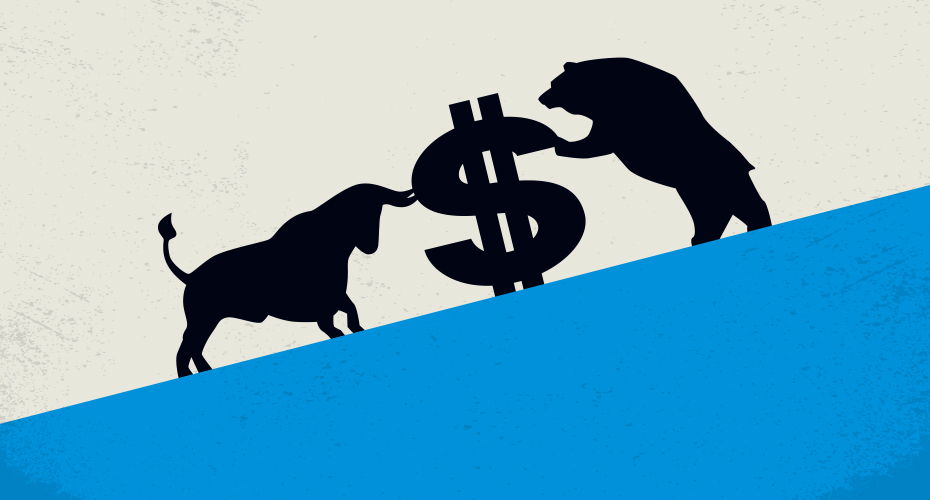Published June 16, 2020 • 4 Min Read
To help Canadians protect their retirement savings during the recent volatile financial markets, the Government of Canada lowered the minimum withdrawal requirements for Registered Retirement Income Funds (RRIFs) and Life Income Funds (LIFs) by up to 25% for 2020.
But is taking advantage of this reduction right for you?
To help retired Canadians make informed decisions about their retirement income, RBC Financial Planners Marco Imbrogno and Giselle Totino share their perspective, offering insights into the benefits and drawbacks of this relief measure.
Looking at the Numbers
For a client who has a RRIF valued at $100,000 on December 31st 2019 and is 71 years old at the time:
-
The minimum withdrawal for 2020 would have been $5,280 (5.28% of the balance on Dec 31).
-
By applying the reduction of 25%, the minimum withdrawal drops by 1.32% making it $3,960 (or 3.96%).
-
That’s a difference of $1,320 and won’t be added to income for 2020.
Who Benefits from this Reduction?
Reducing RRIF income may work for Canadians under a few different scenarios.
1. Conservative Investors
If you’re investing in primarily GICs or other fixed income investments, you may not earn enough income on those investments to cover your withdrawals at pre-COVID rates. For example, if you’re earning 1.5% on your investments but need to withdraw 5.28%, your RRIF is dropping in value by over 3% each year.
By reducing your withdrawal, you’re not redeeming as much as you did in the past, so your money may last longer.
2. Canadians with Other Sources of Income
If you have other income streams — from a pension, defined benefit plan or locked-in account — reducing your RRIF may accomplish a couple things:
-
Reducing your taxable income. If your marginal tax rate is at 30%, for example, reducing your RRIF using the figures above equates to a savings of $396.
-
Allowing you to keep more money in your RRIF so it may continue to grow.
3. Canadians Close to their OAS Threshold
Canadian seniors over the age of 65 may qualify for Old Age Security (OAS), which pays a maximum benefit of $613.53 for the April to June 2020 quarter.
When your net income exceeds the income threshold set by the government, however, you may have to repay all or part of your OAS pension on your tax return for that year. This is known as OAS claw-back.
-
The repayment amount is equal to 15% of your income that exceeds the minimum threshold amount for the year.
-
Once your income reaches a maximum threshold amount, your OAS will be fully clawed back.
-
The income threshold amount is updated every year. For 2020, if your net income is $79,054 or higher, you would be required to pay back the OAS payment.
If reducing your RRIF payment brings you under the OAS threshold, allowing you to take advantage of this government benefit.
Who Doesn’t Benefit
Many Canadians rely heavily on their RRIF payments to create the retirement income they need for their day-to-day lives. While reducing the withdrawal may allow your money to keep growing, if you need the funds today, you may not want to cut your income back. Maintaining a comfortable level of cash flow can be a crucial factor in enjoying financial comfort and confidence in retirement.
The Importance of Looking at the Full Picture
When making a decision about your RRIF withdrawal, it is essential to look at your entire financial picture.
“It’s critical to look at the whole picture and work with an accountant to understand what your overall taxable income is,” says Imbrogno. “If you’re generating too much taxable income, for instance, maybe that can be shifted into a Tax-Free Savings Account. The best move for you depends on your asset mix, your income sources, and your cash flow needs in retirement.”
The Bottom Line
Whether you decide to continue with your regular RRIF withdrawals or take advantage of the opportunity to reduce the amount depends on your unique financial situation. While the information available can help guide your decision, it may be best to review your decision with an advisor.
“Regardless of how your portfolio has withstood the economic fallout from COVID-19, you will weather the storm better if you’re not alone,” says Totino. “An advisor can help you keep a steady hand, stay informed and make decisions that will help you reach your financial goals.” Book a Check In with your advisor today, and understand what is right for you.
RBC Financial Planning is a business name used by Royal Mutual Funds Inc. (RMFI). Financial planning services and investment advice are provided by RMFI. RMFI, RBC Global Asset Management Inc., Royal Bank of Canada, Royal Trust Corporation of Canada and The Royal Trust Company are separate corporate entities which are affiliated. RMFI is licensed as a financial services firm in the province of Quebec.
This article is intended as general information only and is not to be relied upon as constituting legal, financial or other professional advice. A professional advisor should be consulted regarding your specific situation. Information presented is believed to be factual and up-to-date but we do not guarantee its accuracy and it should not be regarded as a complete analysis of the subjects discussed. All expressions of opinion reflect the judgment of the authors as of the date of publication and are subject to change. No endorsement of any third parties or their advice, opinions, information, products or services is expressly given or implied by Royal Bank of Canada or any of its affiliates.
Any information, opinions or views provided in this document, including hyperlinks to the RBC Direct Investing Inc. website or the websites of its affiliates or third parties, are for your general information only, and are not intended to provide legal, investment, financial, accounting, tax or other professional advice. While information presented is believed to be factual and current, its accuracy is not guaranteed and it should not be regarded as a complete analysis of the subjects discussed. All expressions of opinion reflect the judgment of the author(s) as of the date of publication and are subject to change. No endorsement of any third parties or their advice, opinions, information, products or services is expressly given or implied by RBC Direct Investing Inc. or its affiliates. You should consult with your advisor before taking any action based upon the information contained in this document.
Furthermore, the products, services and securities referred to in this publication are only available in Canada and other jurisdictions where they may be legally offered for sale. Information available on the RBC Direct Investing website is intended for access by residents of Canada only, and should not be accessed from any jurisdiction outside Canada.
Share This Article






